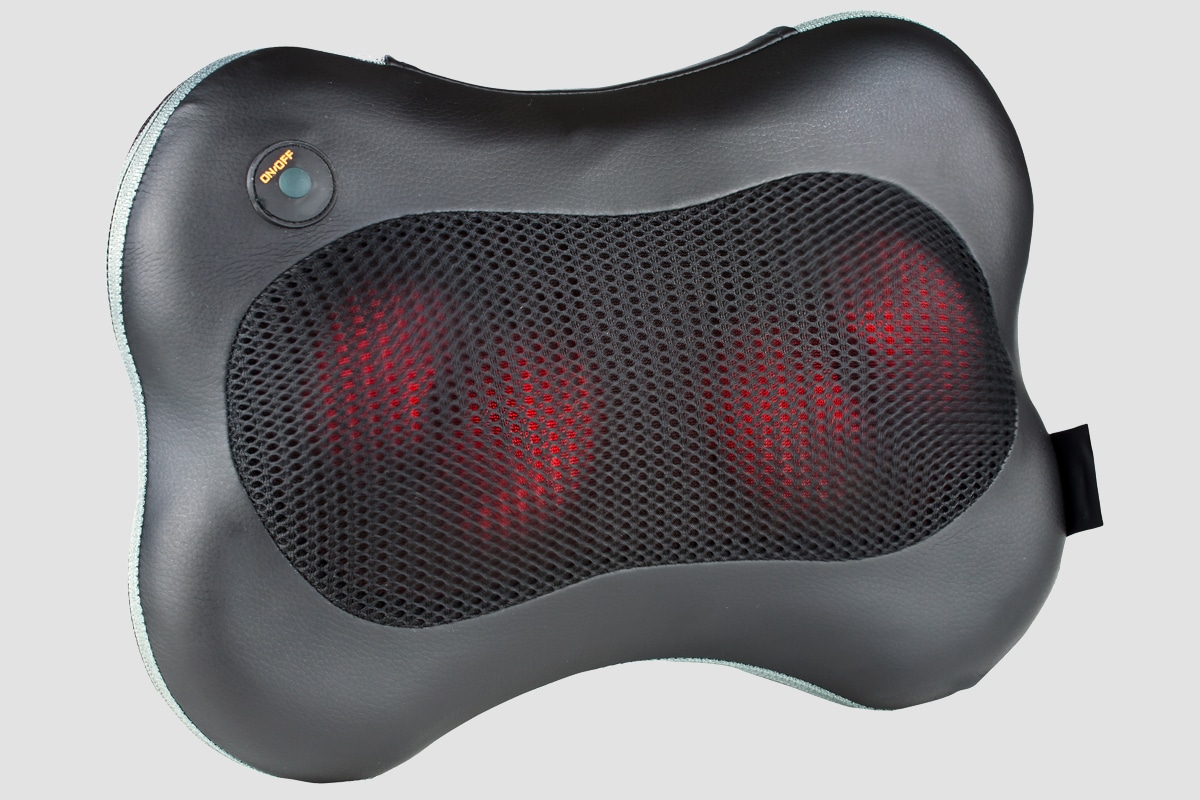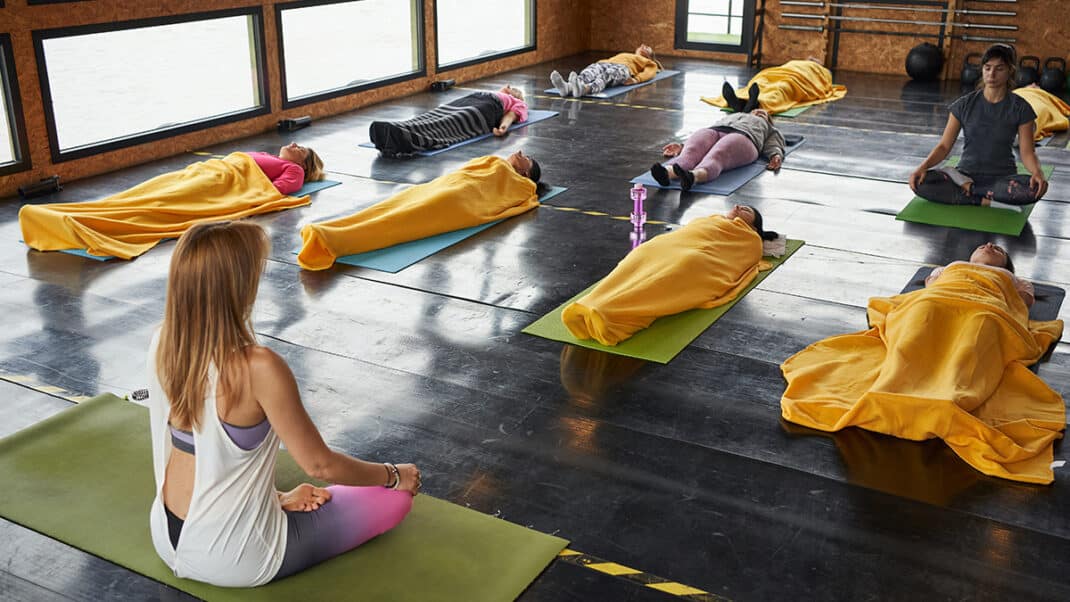Self-Care Massage Tools for Recovery
Navigate options to find the best massage tools to help you and your clients with recovery.
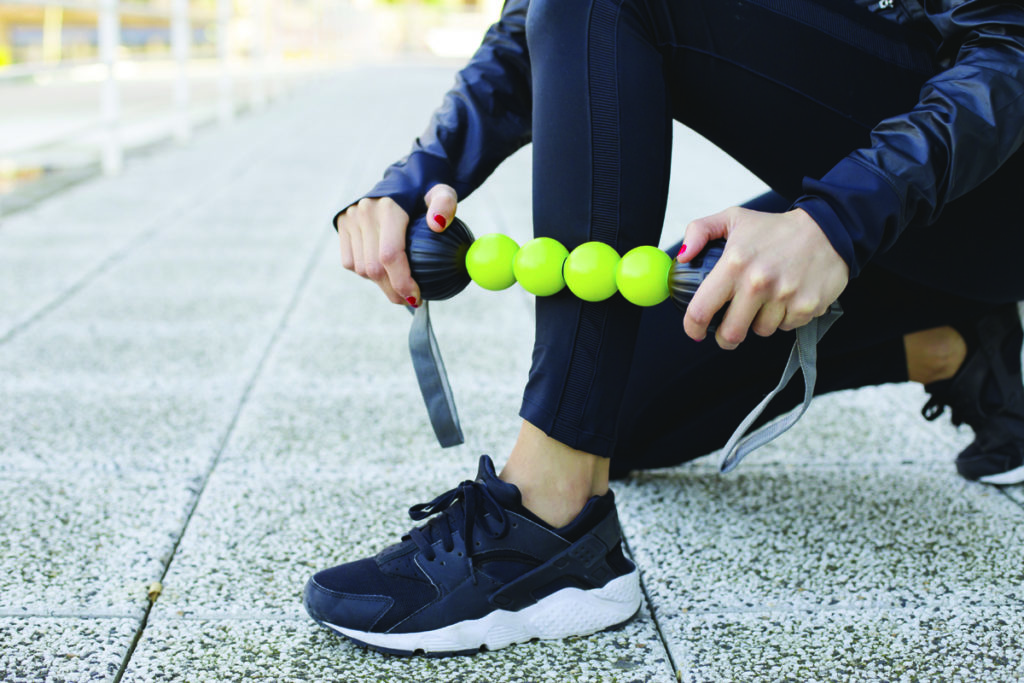
As a fitness pro, you no doubt value the restorative properties of professional massage. However, finding time for a massage may sometimes be difficult. That’s why it’s helpful to use self-care massage tools for preventing or treating pain or imbalances in the body. While these tools don’t provide “massage” as such (and can’t replace a professional therapist), the best ones offer some of the same benefits.
Which are the optimum tools for you and your clients? There’s no simple answer to that. A product that one person finds too painful to use—or just cumbersome or ineffective—might be a lifesaver for someone else. Educating yourself on how different devices work will help you assess their effectiveness at providing the desired benefit to the targeted part of the body. Here, you’ll discover various kinds of tools and learn which options might work well for you and your clients.
Shopping and Cost Considerations for Self-Care Massage
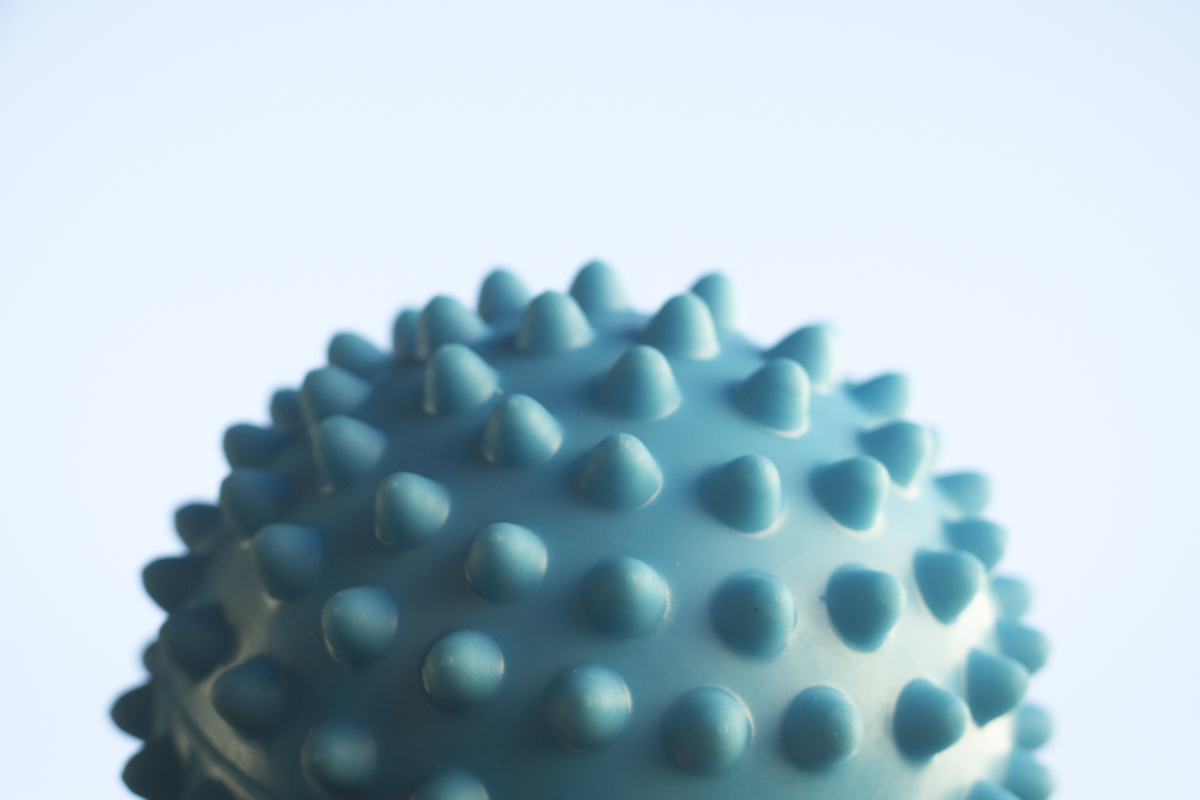
Cost is important to wellness pros and clients alike, so the products we’ll talk about here are all affordable.
In the internet age, many small, family-owned massage and physical therapy supply stores have shuttered, unable to keep up with the volume and pricing of large-box stores and online retailers. That said, it’s worth a search. The hands-down best way to find out what you like is to try it first, and these stores generally have samples of popular tools and employees to offer expert advice. Brookstone and Relax the Back also carry many tools, though they tend to be higher-end electronics. Still, feel free to stop in and try a $7,000 massage chair!
No massage supply store within reasonable distance? Look online for companies that cater to massage therapists and physical therapists, and see what they prefer (Massage Warehouse, ProTherapy Supplies, etc.). This can help narrow your search. Note: Some tools are not returnable, especially if they are in the “health” category on sites like Amazon.
Cost is important to wellness pros and clients alike, so the products we’ll talk about here are all affordable. Omitting quality electronic massagers that cost upward of $200, as well as those deluxe massage chairs, still leaves hundreds of products to consider.
Prices are the same pretty much everywhere because most manufacturers set a suggested retail price (MSRP) for each of their products. Some manufacturers even make prices mandatory so that their customers (i.e., retailers) don’t undercut one another. The reasoning is simple: If a product can be sold for $40 on Amazon instead of $50 because of higher volume, it would be impossible for smaller customers—such as chiropractors, massage therapists, and massage and physical therapy supply stores—to compete in the marketplace.
See also: Alternate Exercise Recovery Methods
What Self-Care Massage Tools Do
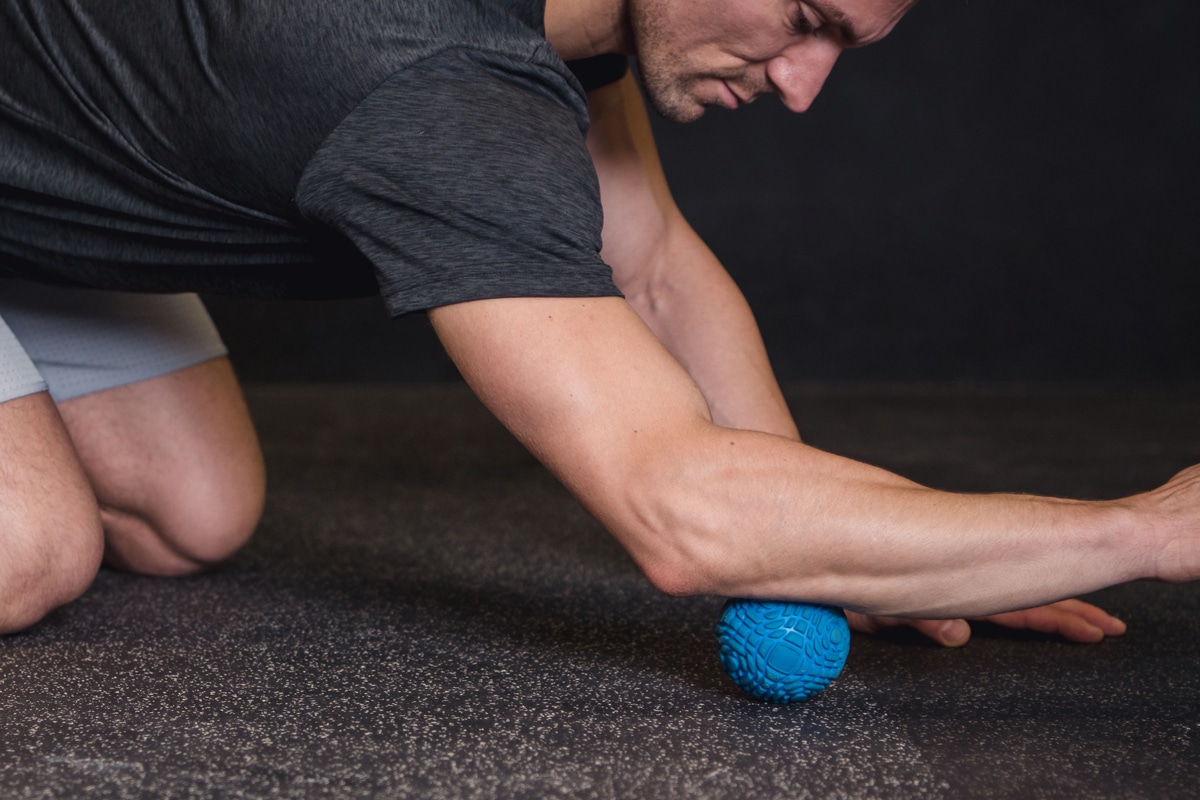
Some devices require users to provide pressure themselves, which offers excellent value and durability.
Through trying many massagers over the years—and inventing a few—I’ve found that the most effective tools replicate effleurage (long strokes in the direction of the muscle) and trigger point massage (direct pressure on specific hypertense nodes of muscle tissue).
Other techniques are not easily produced mechanically. Sure, a top-end massage chair can provide a decent petrissage (kneading) of the back, but most of us won’t (or can’t) lay out thousands of dollars for a chair. Cross-fiber work is highly effective at breaking up scar tissue and adhesions, but this technique can be aggressive and requires extensive training and expert touch. With cross-fiber machines, there is always some risk of injury.
Some devices provide their own pressure, usually through springs or bands that push rollers or wheels together to provide massage pressure on limbs and extremities (these rolling arm, hand, leg and foot massagers are gentler versions of the “antique clothes wringer” design). Other devices require users to provide pressure themselves, either by gripping or pushing with their hand(s) or by lying, sitting, stepping or otherwise using their weight to exert downward pressure with gravity. This latter category offers excellent value and durability.
Worth the Cost: Shiatsu Massagers
Low-cost self-care massage products can often be very effective, making it unnecessary to spend more. However, one tool it’s worth paying more for is an electronic shiatsu massager that mimics the finger pressure of rotating thumbs. This type of device can be effective on specific areas, mostly the back and neck, and a decent one will run you $100–$200. Since shiatsu relies on knowledge of acupuncture points and the flow of qi (energy or life force), the result is not really shiatsu, but these machines do provide deep pressure (from your weight on the machine). The cost comes from motors and other hardware that have to withstand years of high tension and resistance.
The Ball Benefit
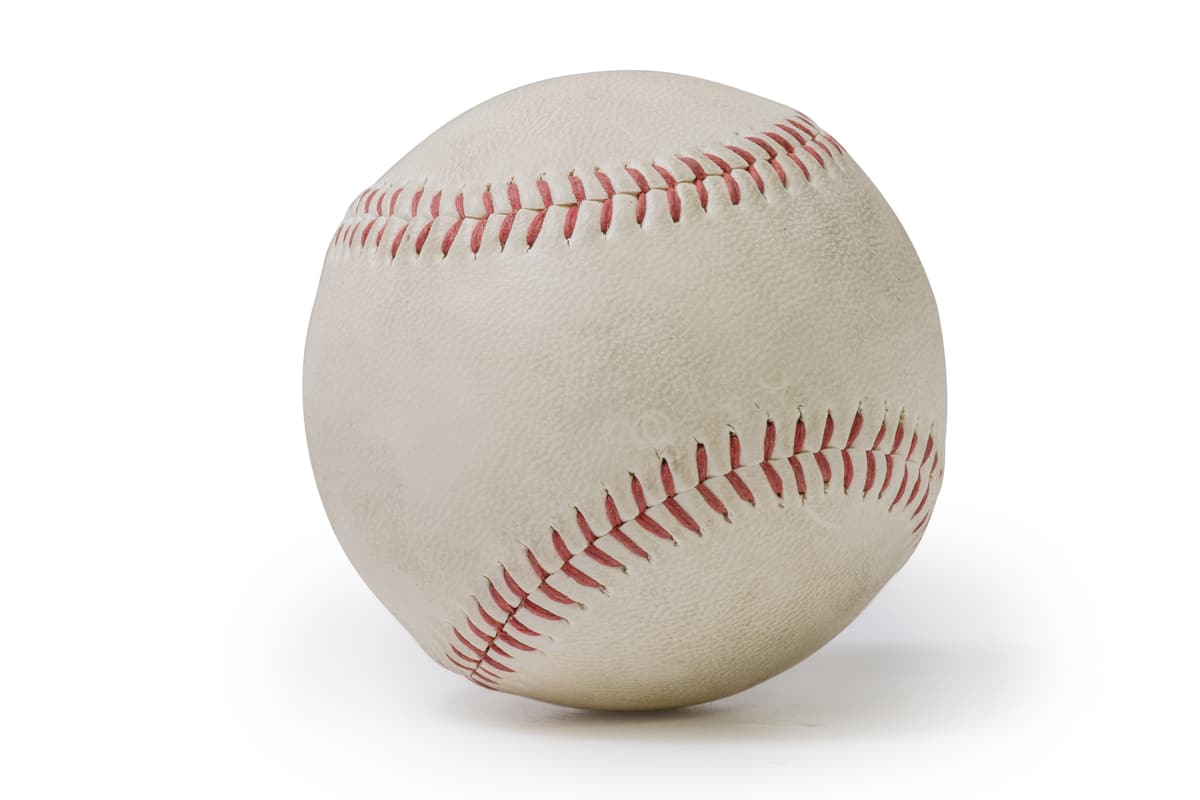
Consider using baseballs, golf balls and other spherical objects to compress and release trigger points.
One of my favorite tools cost nothing—it’s a baseball I caught at Dodger Stadium! I roll my foot on it to help with plantar tightness. People have used tennis balls, golf balls, superballs and pretty much any small, hard spherical object to compress and release trigger points for quite some time.
Now we have fancy, specialized massage balls. Some have nodes or bumps on them, which feel nice on the feet and hands but don’t necessarily add any physiological benefit. That said, if you try a spiky ball and like how it feels, get one! The better something feels to you and the easier it is to use, the more often you will use it and reap the benefits.
Speaking of sports-inspired items, the hard, rubber lacrosse ball is now a popular self-care product and sporting good. Starting at around $5, lacrosse balls offer the right size and firmness for self-trigger-point work. You can roll your feet with one, using your weight to control pressure for massage or reflexology, or place a ball under the center of a glute and sit on it, focusing on the piriformis muscle to relieve sciatic pain. Lacrosse balls make a great gift idea for clients.
Tip: Buy lacrosse balls as a sporting good rather than a massage tool. They’re the same thing but cost less.
See also: Exercise Recovery: Active vs. Nonactive
Self-Care Massage With Foam Rollers
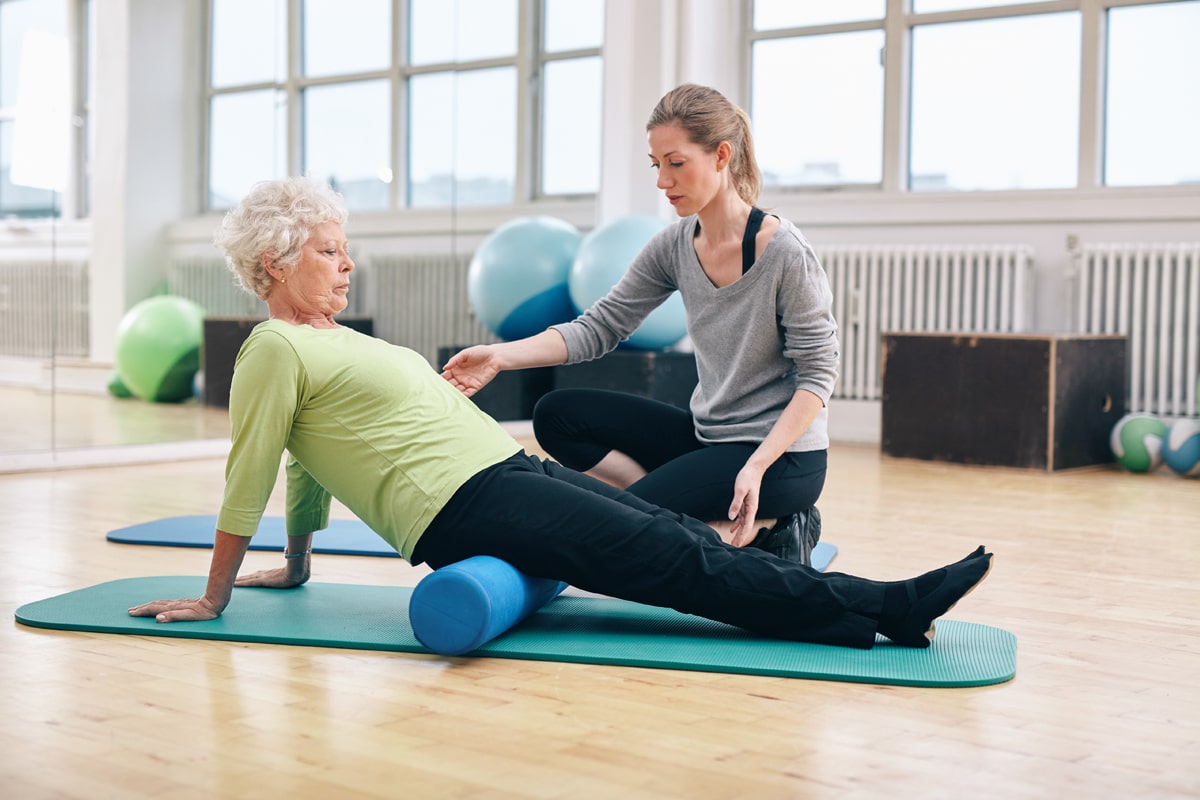
Foam rollers are best for back, hips, buttocks and legs.
Foam rollers, beloved by physical therapy and rehab specialists, also work with your weight and are easily used on most parts of the body with varying levels of effect. In addition to massaging muscle, foam rollers help with myofascial pain by compressing trigger points. Because of their shape, rollers are best for back, hips, buttocks and legs. Rollers are made of dense foam and come in different lengths. The most effective and versatile are the 24- to 36-inch sizes.
You can buy rollers for $30 or less online, at physical therapy stores and, these days, at sporting goods stores, and you’ll find hundreds of foam-rolling videos online. Rollers are highly recommended and very cost-effective, but they need to be used properly to get good results.
You can buy rollers with nodes, ridges, finger-shaped bumps and grooves for your spine. There are even ones that vibrate. The basic roller works well, but if you feel that something with nodes or grooves might be more effective for you, by all means try it. For me, one of the best things about basic foam rollers is that they have only one part, so there is almost no chance of breakage.
Alternative products are basically rolling pins for muscles. These work much the same way as foam rollers, but all the force has to come from the user’s arm strength. Some people really like these “rolling-pin” options for working the legs (for runners) and upper shoulders. I prefer foam rollers because the arms can remain at rest or be used to balance on the roller.
To be able to massage narrow areas of the body, like arms and legs, people have taken the roller concept and put the rollers in frames or bases, as in an arm and hand massager that I invented. The user slides an arm or leg between the rollers to perform self-massage. In some cases, the user has to hold the device with one hand and provide pressure by squeezing a handle while massaging the other hand. Other devices provide their own tension via springs or elastic bands.
Self-tensioning tools are helpful, especially for carpal tunnel or tendinitis pain in the hands and wrists. Clearly, if one has repetitive strain in the wrist or hands, then providing pressure with one hand while massaging the other makes little sense. To use a self-tensioning device for muscle soreness or tendinitis, you simply slide a leg or an arm into the massager and work it up and down the limb. This works really well for the arms and lower legs, areas where foam rollers are less effective.
See also: Seniors and Self Myofascial Release
The Cane Category

Cane massagers are usually durable and affordable, offering a great way to self-administer trigger point techniques.
Cane-shaped tools with nodes and handles are another major group of tools that, like balls, put pressure on small points. Thera Cane®® was the first, but new versions appear often, with additional features. Some are longer; some can be taken apart to fit in a gym bag.
Here again, simpler is better. With these tools, you simply position the tip of the cane or one of the nodes on a trigger point and place pressure on it by pulling on the handles or leaning on the device. These massagers come with links to video instructions. They are usually durable and affordable and offer a great way to self-administer trigger point techniques, even on hard-to-reach places, such as the inner edge of the scapula—a problem area for many.
Sore necks also call for specialized tools. One type of device has two balls mounted inside the junction of two rods in a V-shape. The balls can be used to squeeze points on muscles, especially in the suboccipital region, which is great for neck pain and migraines. A similar, smaller tool uses two fingerlike nodes mounted inside a flexible plastic oval frame that can be used in a similar manner to compress points on the neck by squeezing the handles together. These are priced from $15 to $40.
Self-Care Massage for Success
Massage tools are helpful supplements to self-care. You can buy them for yourself, purchase them to use in your business, or give them to clients as gifts. You can also sell them to increase your revenue. By knowing how to assess different types of products, you can find what works best to keep yourself and your clients flexible and pain-free.
Updated July 30, 2021.
